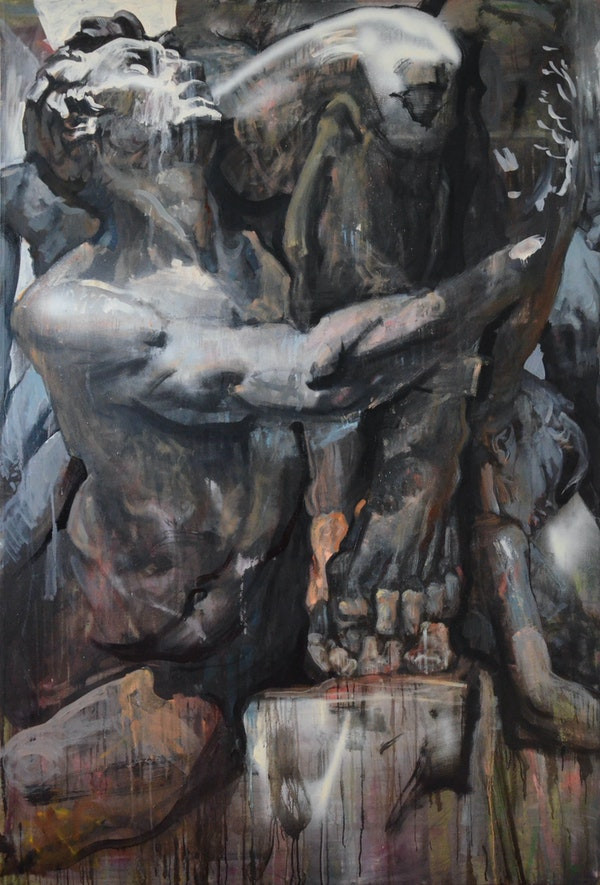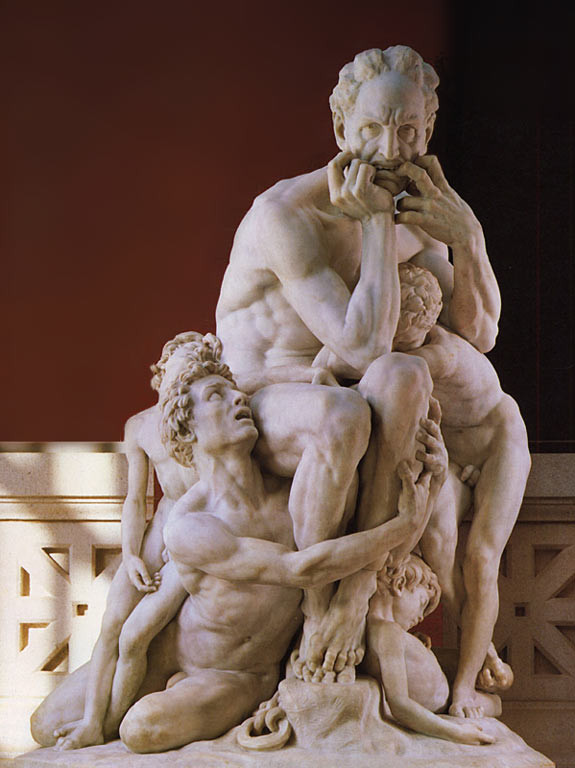
Digital art, Metaverse, AR - technologies are changing the world of contemporary art right now. For example, NFT. Non-fungible tokens are available only in a single instance. They cannot be copied. They are unique. When buying or selling such a token for the Ethereum cryptocurrency, the same actions are performed as when implementing a physical object. Except that information about the current owner is publicly available. The scope of use is not limited to paintings (the most famous case occurred with Banksy: his work was burned and turned into a token).

"Sons" is a NFT painting painted by the artist Evgenia Maltseva (by the way, that is her first NFT). She was inspired by the sculpture "Ugolino and his Sons", which she saw at the Metropolitan Museum of Art in New York. The artist was deeply impressed by this sculpture and this story, it was perfect from all sides, every line was beautiful. Why does the artist emphasize the composition on Ugolino's sons? So, to begin with, we will tell you a few words about the sculpture, the photo of which is below.

A vivid embodiment of the tragic worldview of Jean Baptiste Carpo is the sculptural composition "Ugolino and his sons", depicting the deposed and imprisoned ruler of Pisa, ready to gnaw his fingers from hunger. Exhibited in 1863 at the Paris Salon, it provoked, as later the Dance, fierce criticism. "I wanted to convey the most violent passions and combine them with the softest tenderness," Karpo will write to his friend.
Ugolino seized power in the city and, at the cost of territorial concessions, achieved peace with the enemies of Pisa: Florence and Genoa. In Pisa, the count established a regime of brutal tyranny, changed the constitution of the city, weakening the influence of the Gibbelin nobility, and strongly objected to the return of prisoners from Genoa. Such a policy did not add Ugolino's grfu sympathies in the eyes of fellow citizens.
On June 30, 1288, an uprising broke out in Pisa, on July 1 Ugolino himself, his two younger sons (Gardo and Ugoccione) and two younger grandchildren (Nino, nicknamed Brigata, and Anselmuccio), the children of his eldest son Guelfo, were captured. All of them were imprisoned in the tower of the Guallandi family (Torre dei Gualandi) in March of the following year. Ugolino died two months later in terrible agony.
Most likely, Evgenia Maltseva wanted to show in her work the greatness of parental sacrifice and bravery, the answer to which is always children's pure love and boundless admiration, Ugolina's sons are amazed by his act. The main emotion of both paintings and sculptures is bottomless tenderness.
You can buy it here.
